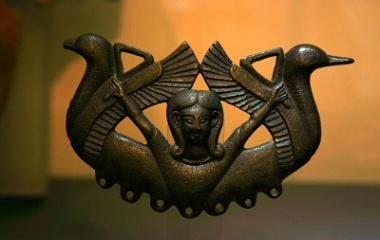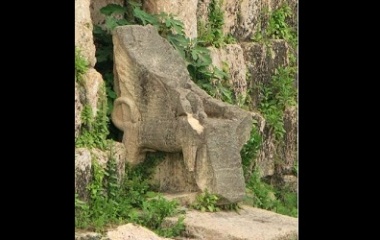- Pronunciation: Ah-star-tea
- Origin: Egyptian (in this incarnation)
- Other names: Ashtoreth
Astarte is a goddess of many names, with a story that spans many cultures, numerous parts of the world, and almost the whole of human history. Her influence on modern religions is still felt strongly and Astarte’s touch can be found in some surprising places.
Who Is Astarte?
Astarte is the goddess of war and, to a lesser extent, the goddess of love and fertility. In Egypt she was thought of as an especially powerful warrior goddess and was also associated with the most powerful war machine of the time: the horse and chariot.
She was especially fond of people who were good with horses, as demonstrated by one story where she delighted in the fact that a pharaoh’s son was an excellent horseman.
Astarte’s cult was significant in Egypt, and special obelisks were made for the purpose of worshipping her. She is considered one of the major gods of Egypt.
Appearance
Astarte is usually shown as a beautiful, naked woman. Often, she wears a set of bull horns on her head, a sign of dominance and power. Many depictions also show her with a set, or even two sets, of wings. It’s common for Astarte to be shown with overly round hips, which is associated with motherhood and fertility. Sometimes her body is shown as androgynous, which simply means that it looks neither male nor female. Astarte can also be shown wearing a crown.
Because she is considered the mistress of horses by Egyptians, many depictions of her show the goddess on horseback or otherwise in the company of horses.
Family
Depending on where in Egypt you asked, Astarte’s father was either the sun god Ra, or Ptah, the god of craftsmen.
If she is a daughter of Ra it means that she is also the sister of Anat, another war goddess. Astarte is also associated with another daughter of Ra, namely Hathor. Hathor is a goddess of fertility, which is of course an attribute Astarte is also known for.
Her consort was Seth, who is (no surprise) a god of war. He is also god of winds, storms, evil, chaos and darkness. It seems that even some goddesses have a soft spot for bad boys.
Astarte also had a son, according to the Canaanites, by the name of Hauron. Hauron was also later officially accepted into Egyptian religion.
Origins and History
We know very little about Astarte specifically in her Egyptian incarnation, but we do know that she is another version of the Mesopotamian goddess Ishtar.
Astarte was officially adopted into Egyptian religion during the 18th Egyptian dynasty.
As Ishtar, there are quite a few stories about Astarte in The Epic of Gilgamesh. Here, she is shown to be a bit moody and spoiled; in one story, she goes to the gate of the underworld and demands to be let in.
Ishtar was all about love and became pretty obsessed with a few men whom she insisted she wanted to marry. Gilgamesh himself told her no thank you, due to having heard stories about all the other men she had loved and then dumped or hurt in some way.
When Ishtar failed to get her own way, she could get pretty nasty about it. She was rather liberal with her demands and curses, and was known for generally throwing her weight around. The problem is that, although Astarte is derived from Ishtar, we can’t assume that the Egyptian form of this goddess was anything like Ishtar.
Ishtar and Astarte may also be the inspiration for Mary, mother of Jesus, in modern Christianity, since the cult of Ishtar spread throughout the Middle East and beyond, reaching as far as Europe. It’s also possible that Astarte served as the inspiration for the Greek goddess Aphrodite, who bears many resemblances to Astarte.
Modern Influence
As such as ancient and important goddess, Astarte under her many names is often referred to in media such as video games, animation, fantasy novels and film. As Ishtar, for example, she is mentioned in the Sandman comics, as well as in the Conan the Barbarian stories.











Thank you for the history and time line references to establish her connection with Baal at the time of Israelite King Ahab and Queen Jezebelle.